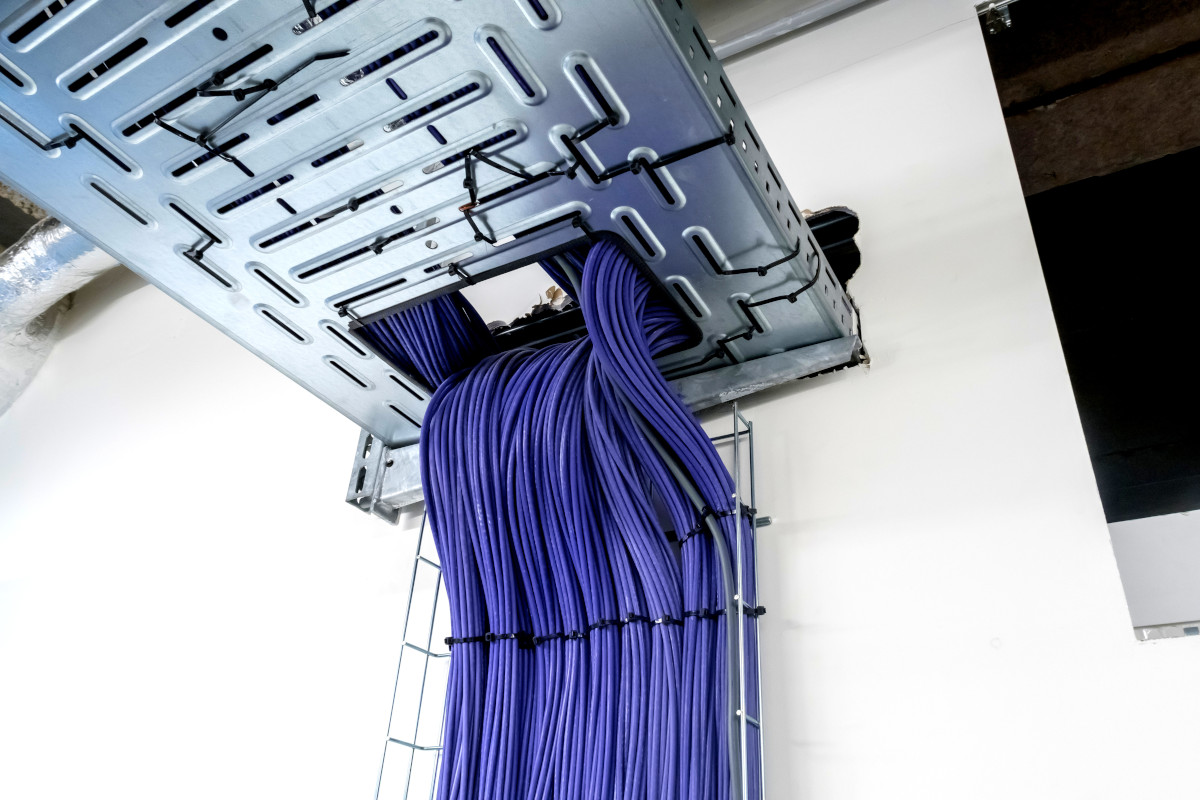The Benefits of Structured Cabling
March 10th, 2023 by admin

Structured cabling is a type of cabling system used to provide communications services, such as voice and data networks, across many different types of buildings and facilities. Structured cabling systems typically consist of patch panels, cables, connectors, racks, and other components that are used to build the physical layer of a network.
In addition to providing high-speed, reliable data and voice communications, structured cabling systems are also designed to be scalable and flexible. This allows businesses to easily change their networks or add new components as needed without having to rewire the entire system.
Structured cabling is a cost-effective solution for businesses looking to save money on long-term network maintenance and upgrade costs. With its versatile design and scalability capabilities, structured cabling is ideal for providing high-speed networking solutions in many different types of buildings and facilities.
Structured cabling has become increasingly popular with businesses that need flexibility from their network infrastructure. It is especially useful in larger organizations where multiple offices are connected together across great distances.
Structured cabling can provide an efficient way to enable communication between these different offices and locations, allowing for better collaboration and productivity. Additionally, structured cabling can provide reliable connections between multiple devices and applications, ensuring that data is always secure and accessible when needed.
Overall, structured cabling is an invaluable tool for businesses that want to save money on long-term networking costs while still providing high-speed performance. With its cost savings and flexibility benefits, it's no wonder why more organizations are taking advantage of this type of cabling system every day. By utilizing the right components in your network infrastructure, you can ensure that your organization will have reliable communications services now and in the future.
What Are the Main Benefits of Structured Cabling?
Structured cabling offers a range of potential benefits for businesses and other organizations. The most important advantages include improved reliability, easier troubleshooting, enhanced scalability, greater flexibility, and cost efficiency.
-
Reliability
Structured cabling is designed to be more reliable than traditional twisted-pair wiring as it utilizes higher-quality cable and connectors. This makes structured cabling ideal for mission-critical systems that require consistent performance over an extended period of time. As the cables are usually organized in vertical columns or horizontal pathways, it's also easier to identify the source of any faults that may occur due to the structured layout.
-
Easier Troubleshooting
Faulty connections can be easily identified in a structured cabling environment due to the way that it is laid out. This makes problem diagnosis and repairs faster and easier.
-
Enhanced Scalability
Structured cabling allows for easy expansion or modification of systems without extensive rewiring, which can prove costly. As the cabling layout follows a standard design, new components can be added to existing systems without difficulty.
-
Greater Flexibility
Structured cabling provides greater flexibility than traditional wiring as it uses fewer cables with more connectors connected along designated pathways. This makes it easier to configure different devices across multiple locations, allowing businesses to quickly adapt their networks as new technologies emerge.
-
Cost Efficiency
The scalability and flexibility of structured cabling make it a cost-effective solution for businesses. The cost of installation is also lower than traditional wiring as the layout is predetermined and requires less labor. Additionally, repair and maintenance costs are reduced due to the ease with which faults can be identified.
In summary, structured cabling offers a number of benefits for businesses, including increased reliability, easier troubleshooting, enhanced scalability, greater flexibility, and cost efficiency. With its many advantages, it's easy to see why structured cabling has become such an essential component of modern networks.
Structured cabling provides organizations with a reliable, cost-effective, and efficient way to connect computers and other devices. Structured cabling systems are designed to be scalable and adaptable, allowing for future growth of the network without costly upgrades or reconfigurations. An organized cable management system allows technicians to quickly identify potential problems and make necessary repairs more quickly.
Additionally, structured cabling reduces electromagnetic interference (EMI) between cables while providing better data transmission performance than traditional unstructured cable designs. With structured cabling, companies can also enjoy improved security since there is less vulnerability to external hacking attempts due to the increased physical protection of the cables themselves.
If you want to learn more about the benefits of structured cabling, contact us today.
Posted in: Solutions


